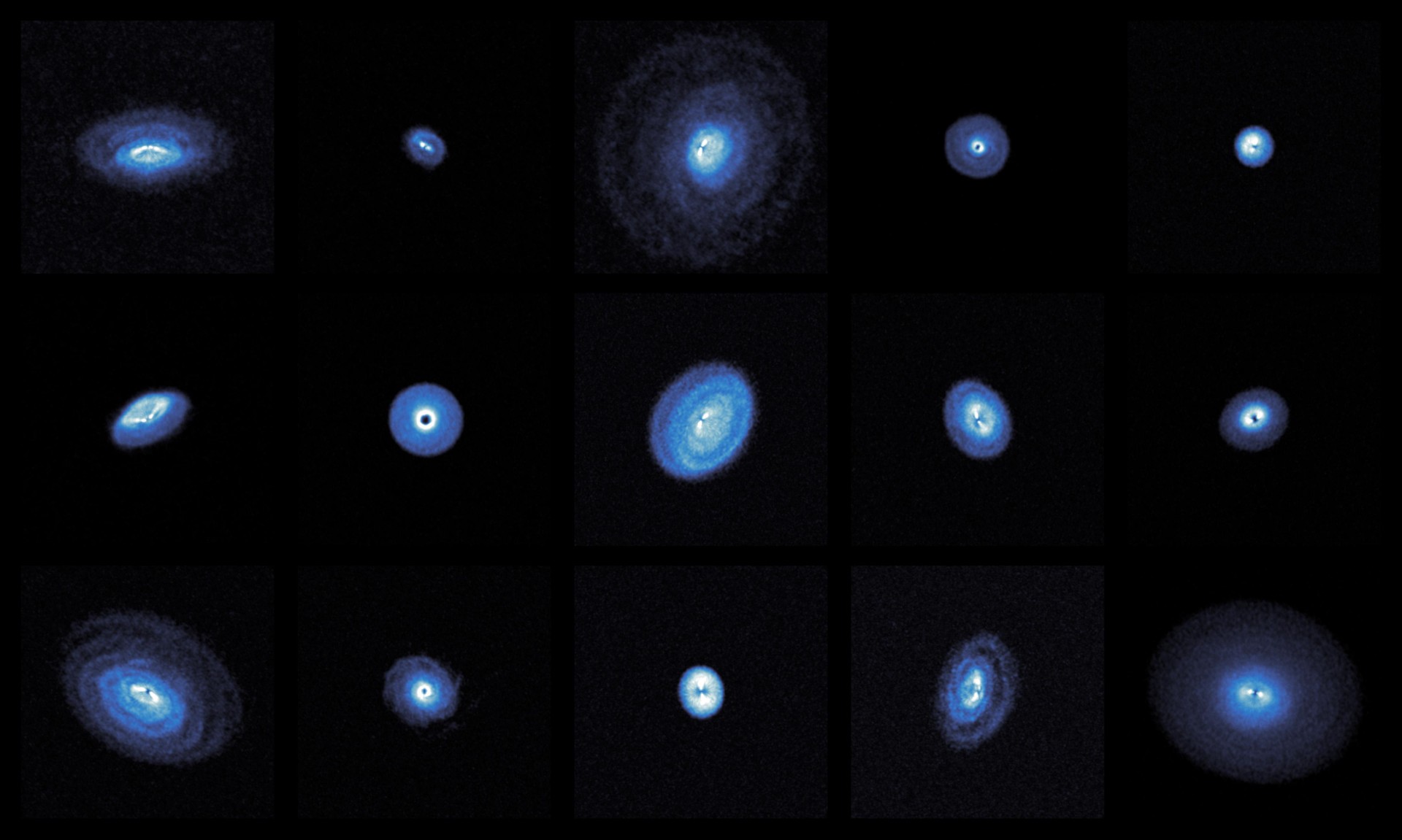“Planet formation appears to be a ubiquitous process, taking place in the gas- and dust-rich protoplanetary disks that encircle newly formed stars. Detailing the physical and chemical processes that lead to the formation of planets is critical in understanding the striking diversity of mature planetary systems that we have found,” Richard Teague, Department of Earth, Atmospheric and Planetary Sciences, MIT, explains in The Astrophysical Journal Letters.
“To truly understand the mechanisms that are sculpting these dust distributions and identify the physical conditions in which planetary systems form, we must study the gas component of the disk in a commensurate level of detail.”
As such, the team at exoALMA have been refining their methods to search for and image these rotating disks of gas and dust which will go on to form planets around their host stars. Rather than look for the direct light from fledgling planets, the team looked for the effect that the planets had on their surrounding environment.
“It’s like trying to spot a fish by looking for ripples in a pond,” Christophe Pinte, an astrophysicist at the Institute of Astrophysics and Planetology of Grenoble, Monash University, and co-PI of the exoALMA team, explained in a statement, “rather than trying to see the fish itself.”
For the newly-released images, the team used improved imaging and calibration techniques, applied to highly-sensitive observations of spectral resolution data of gas emission. The result is that they were able to detect very minor disturbances in protoplanetary structures, likely caused by young planets emerging from the debris.
“The new approaches we’ve developed to gather this data and images are like switching from reading glasses to high-powered binoculars—they reveal a whole new level of detail in these planet-forming systems,” Teague, who also leads the exoALMA project, added. “We’re seeing evidence of hugely perturbed and dynamic disks, highly suggestive of young planets shaping the disks they’re born in.”

Image showing the size difference in protoplanetary discs.
Image credit: Richard Teague and the exoALMA Collaboration
By examining these disks, astronomers hope to learn more about how planets are formed, and how the size, shape, and rotation of such disks lead to the variety of planets we see in the cosmos. As part of this, the team was able to make mass estimates of the disks themselves.
“Similarly to what has been achieved with the rotation curves of full galaxies to measure the mass of dark matter halos, the team managed to estimate the gravitational influence of the disk itself allowing for a novel approach to determining the mass available for forming planets, benchmarking alternative methods leveraging line fluxes,” the National Radio Astronomy Observatory explains.
“exoALMA provides the first insights into the key physical mechanisms at play during the earliest stages of the formation of solar system analogues by revealing dynamical interactions with companions or planets, as well as complex instabilities.”
Analysis of the images taken will continue, with 17 papers already published on the topic. In one paper, Characterizing the Gas Dynamics around Dust Asymmetries, the team attempted to see if models involving anticyclonic vortices fit the observations from exoALMA.

Young star HD 135344B, imaged with four different methods, with a structure “suggestive of a vortex”.
Image credit: Richard Teague and the exoALMA Collaboration
“The key planet-formation processes in protoplanetary disks remain an active matter of research. One promising mechanism to radially and azimuthally trap millimeter-emitting dust grains, enabling them to concentrate and grow into planetesimals, is anticyclonic vortices,” the team explained in their paper.
“When compared to the data, we find that none of the sources show a distinctive vortex signature around the dust crescents in the kinematics. HD 135344B exhibits a prominent feature similar to the predictions from the simulations, thus making this the most promising target for sensitive follow-up studies at higher resolution and in particular with less abundant molecules at higher resolution and sensitivity, to trace closer to the disk midplane.”
Further observations are planned while astronomers digest the current images. Interesting discoveries about the creation of young planets surely await.
A total of 17 papers are published in a special issue of The Astrophysical Journal Letters.
Source Link: Protoplanetary Disks Captured By ExoALMA Astronomers In Extraordinary Detail